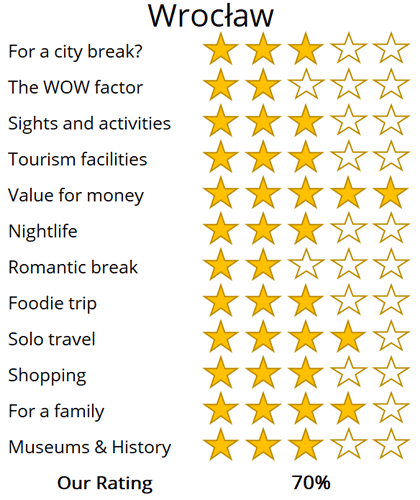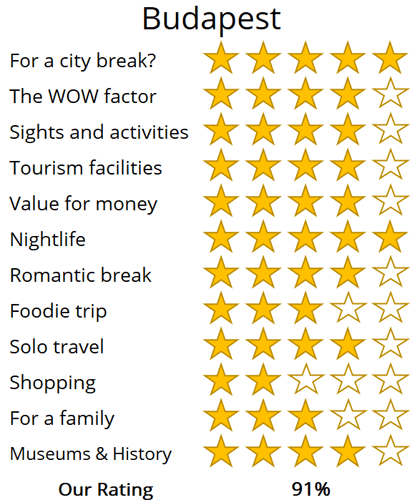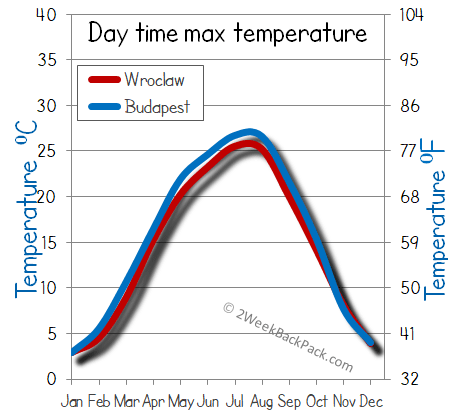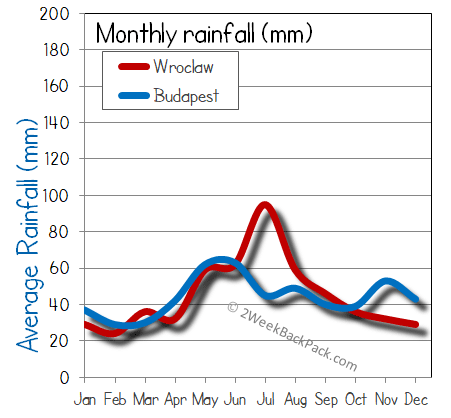WhereToGoForMyHoliday.com
The best destination comparison site!
WhereToGoForMyHoliday.com
The best destination comparison site!
Wroclaw or Budapest, which is better for your holiday in 2024?
Wroclaw and Budapest both offer unique and enticing experiences, but which one should you choose for your city break or holiday?
We recognise the difficulty in making this decision. While there is abundant information available on both destinations, clear guidance on which city better aligns with your travel preferences is often hard to find.
This article aims to provide an impartial comparison of Budapest and Wroclaw, and hopefully help you to choose the best city to visit.
The article is structured into several sections, each of which can be directly accessed through the following links:
• Introduction to the cities
• Scores and ratings
• Which one should I, friends, or family visit?
• When to visit and weather
• Who is the city suited for?
• The perfect 48hours (with map)
• Tourism details (where to stay? airport details?)
Introduction to Wroclaw and Budapest
Wroclaw is the historical capital of the Silesia region. It's been ruled and fought over and shaped by countless tribes and peoples, from the warring Slavs of the first millennium to the Habsburg emperors to the Prussian generals of the 1800s.
This makes it a strangely diverse and varied city, with Germanic townhouses and Flemish-styled mansions next to Gothic cathedrals and USSR tenements.
Wroclaw is a good-looking city. It's got a beautiful perch on the Oder River, spreading from island to island with arched bridges that recall Venice and wooded parks aplenty.
The Old Town is the anchor of it all, and a great place to wander, people watch, and drink Polish beers. Beyond come the fairy-tale spires of Cathedral Island, the colossal concrete dome of Centennial Hall (a UNESCO site), and even Zen parks inspired by Japan.
Straddling the snaking Danube in the very heart of Europe is Budapest, the buzzing capital of Hungary.
Here, a city of two halves – Buda and Pest – unites to form a complex tapestry of over 1.7 million lives. With grand 19th-century bridges stitching together the landscape, Budapest entices with its blend of storied history, striking architecture, café charm, and lively nightspots.
Whether your eyes are drawn to the regal palaces atop Buda Hill or the heady aroma of sulphur from steaming bathhouses, Budapest never ceases to captivate. Venture into ruin bars, gaze upon the monumental Dohány Street Synagogue, or stroll the wide boulevards left behind by the Communist era.
In Budapest, every glance reveals a new layer of intrigue, a city where the past and present are locked in an endless dance.
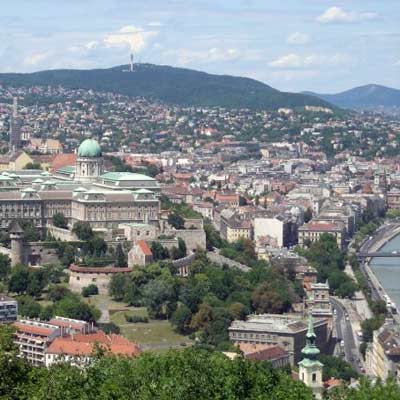
Budapest is a vibrant and modern city just waiting to be explored

The historic centre of Wrocław and the Odra River
High-level summary Wroclaw and Budapest
Summary
Where would I journey for a personal escape?
Budapest
Where would I send my parents for a memorable visit?
Budapest
Where's the ideal destination for my adventurous 19-year-old cousin?
Budapest
Where should my food-obsessed friend indulge their culinary passions?
Budapest
Note: The above comparisons are weather-independent and are based on travel during the most opportune times of the year. Details about the ideal travel seasons are elaborated upon later in this article.
In the sections that follow, you'll find a comprehensive comparison between these two fascinating cities. This includes recommendations on the duration of stay, the best times to visit, and tailored 48-hour itineraries for each city.
The final segment delves into practicalities for your travels, such as the best airport to fly into, the optimal districts for your accommodation, and insider tips, for when you come to explore the city.
We hope that you find all of this information useful, in planning your next exciting trip!
Destination details
How long to spend each city?
Fly-in visits for three days are enough to check off the major must-see sights of Budapest. This is a compact capital with good underground and bus links. You can get easily get across town – going from Buda Castle on one side of the city all the way to the Széchenyi Thermal Baths at the other takes less than an hour on public transport.
That said, Budapest has plenty of hidden secrets up its sleeve. You could easily while away a whole week enjoying cheap happy hours in the ruin bars, bathing in the Art Deco spas, and visiting islands up the Danube. If you're coming in summer, you could also extend a stay to include the art galleries and cobbled lanes of Szentendre, the mineral-rich waters of Lake Balaton, and the rustic Tokaj wine country to the east.
Wroclaw may not be vast in size, but it stands as one of Poland's prominent cities. Its Old Town, brimming with charm, is perfectly navigable on foot, while an efficient tram network offers a swift tour of the key attractions for a modest sum. Generally, a day or two suffices to experience the city’s highlights, making Wroclaw an ideal destination for a brief, fly-in, fly-out weekend retreat.
For those contemplating a more extended stay in Wroclaw, consider interspersing your visit with day trips to the surrounding areas. Nearby, you can explore the forested slopes of Karpacz, visit the awe-inspiring castles along the Eagles Nest Trail, or make a pilgrimage to the sacred site of Jasna Góra.
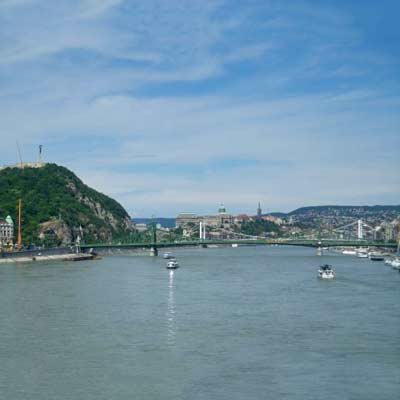
The mighty Danube River cuts Budapest in two

There are over 350 charming dwarf statues are scattered throughout Wroclaw’s historic centre. These characterful figures even have their own tourist map, along with s tory behind each one….
Unless you're a fan of air pollution and sub-zero temperatures, Wroclaw is not the place to be in the winter. The whole of south Poland gets cold between November and March – really cold. We're talking minus 10 degrees regularly, with sudden snowfalls and freeing rain. Of course, when there is a dusting of the white stuff, the Old Town of Wroclaw can look wonderful, but recent winters haven't been so promising.
For sightseeing and enjoying the student buzz of the town, it's probably better to hold off until May. That's when the weather really starts getting good. You might have chilly evenings, but you should be able to don the shorts and t-shirts for your wanders through the city. What's more, the local university is in session, so the bars will be lively and vibrant.
Summer sees the students go home and the tourists arrive. It's a reliable period for weather, even if you have to deal with the occasional thunderstorm around early afternoon. September is just as nice, if not even better. That's when the trees of the island parks in Wroclaw start to change to yellow and ochre, lending a romantic atmosphere to the Silesian capital.
Late spring and early autumn are when locals often say Budapest is at its best. Temperatures average around 23-25 degrees in May and September. There's not an overload of rain then either. And it's perfect for avoiding the crowds of midsummer city breakers that come during the European holidays.
There's also something to be said for visiting Budapest in the midst of winter. Mercury plummets between November and March, and it's not uncommon to see the Danube freeze over with huge chunks of ice. What's more, the tenements and side streets of the Jewish Quarter and the historic Inner City areas ooze atmosphere on cold, snowy days. Just be sure to pack the thermals!
Budapest, with its rich historical culture, intertwined seamlessly with an energetic nightlife, has established it as a top destination for a diverse range of travellers. Backpackers gravitate towards the Jewish Quarter's unique ruin bars, where they can indulge in exceptionally affordable Hungarian beers amidst eclectic courtyards.
Meanwhile, those with a cultural focus may choose to delve into the history of the Hungarian empire at Buda Castle or pay homage at the poignant House of Terror museum, which delves into the oppressive Stasi era.
However, if your preference leans towards sun-soaked beaches, Budapest might not feel like a perfect fit. Situated in a landlocked region, both the city and the country are devoid of coastline. Furthermore, while there are parks, they are predominantly located on the city's periphery, making Budapest predominantly an urban experience.
If you're the sort of traveller that loves to find off-the-beaten-track cities that don't necessarily have big-name sights, then Wroclaw is sure to be right up your alley. It's not as well known as other towns in Poland but comes with local vibes and interesting neighborhoods. It's also a student city, which means the nightlife can get pumping during term times (September to December and January to June).
Wroclaw has something for those who like the great outdoors, too. Not only is it a green place with lots of parks and riverside areas to explore, but the mountains of the Karpacz and the Czech borderlands are only a short drive to the south. They've got hiking, skiing, spa towns and more.

The twin spires of Wroclaw Cathedral
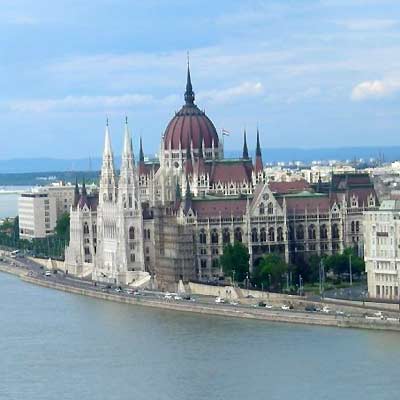
The Hungarian Parliament stands as a stunning testament to Budapest's architectural grandeur, holding the title of the city's tallest building
48hours in Budapest
Day 1: Begin your journey on the Pest side of the city, where the magnificent Dohány Street Synagogue resides. This landmark is not only pivotal to Budapest but also stands as the largest synagogue in Europe. Following this, take a stroll along Andrássy Avenue, a grand boulevard and UNESCO World Heritage site, adorned with Neo-Classical mansions.
Delve into Hungary’s tumultuous history with a visit to the House of Terror museum, situated at one end of the avenue. Subsequently, unwind with a spa session at the renowned Széchenyi Baths, celebrated for its Art Deco architecture. Cap off the day with a hearty dinner at Gettó Gulyás, indulging in their signature paprika-smoked goulash, and conclude your evening with a drink at Szimpla Kert, a mesmerizing art gallery turned bar.
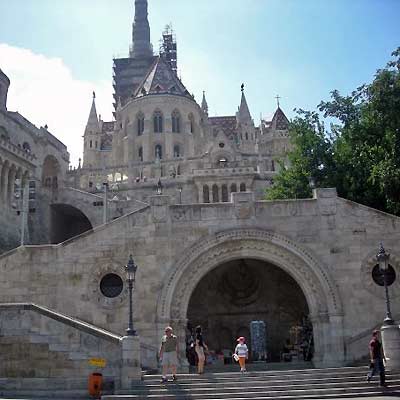
Pest cathedral
Day 2: Start your day with breakfast at the historic Central Market Hall, established in 1897. Savour the taste of sweet Hungarian pastries before crossing the Danube via the striking Liberty Bridge.
Upon arrival, you have the option to visit the elegant Gellért Baths or continue your journey to the Fisherman's Bastion and the Citadella, former military strongholds that now offer breathtaking views of the Danube. A northward stroll leads you to the Castle District, where you can either admire the architecture from the outside or explore the regal court rooms inside.
Don’t miss the chance to capture some photos of the imposing Hungarian Parliament Building across the river. Conclude your day with dinner in the Inner City of Pest, offering a diverse range of dining options from Tex-Mex restaurants to atmospheric 1930s speakeasies.

Gellért Hill offers some of the best views of Budapest, the hill is named after Saint Gerard who was murdered in 1065 by being put in a barrel and rolled down the hill…
48hours in Wroclaw
Two days is all that's needed to explore Wroclaw from top to bottom. Most of your time will be spent in the charming Old Town area, but a few jaunts to parklands and other districts can combine with lively nights on the beer to boot…
The interactive map below shows a suggested route for the 48 hours in Wroclaw, with day 1 highlighted in green and day two in yellow.
Day 1: Every history lover, people watcher, foodie and sightseer will want to see the Stare Miasto district. That's the Wroclaw Old Town; the piece de resistance of this southern city. It begins around the wide boulevard of Piłsudskiego, passing through a few blocks of Soviet-era tenements before hitting the historic area proper. That starts in earnest by the Fosa Miejska, a centuries-old moat that was part of the town's medieval fortifications until it was destroyed by Jérôme Bonaparte, the brother of Napoleon.
On the left as you make for the heart of the quarter is the elegant Wrocław Opera House, while the leafy walks of Park Staromiejski are the perfect place to go for a picnic in the summer. Keep going north and you'll eventually arrive at the Rynek. This is the beating kernel of the Old Town, where you'll find the most amazing sights of all.
The Gothic-styled Old City Hall draws the eye first, followed by the German-built housing blocks of 1931 – considered by the locals to be among the ugliest in town! Be sure to check out the narrow alleys that weave through the middle of the square at the Sukiennice. Also keep the eyes peeled for the little dwarf statues that dot the plaza. They're a kitschy addition to the cityscape that you'll find on many random street corners.
As the afternoon turns into evening, consider settling in for a beer tasting at the hearty Spiż microbrewery. Or, head for Setka, where Communist paraphernalia adorns the walls and you can sample potent vodka with pickled herring.

The Most Tumski Bridge, where romantics leave love locks attached to the rails and throw the key in to the Odra River. To the rear is the spire of the Bartholomew’s church and the twin spires of the cathedral
Day 2: Having explored the Old Town, our second day begins with an exploration of the surrounding islands on the Oder River. There is a plethora to see, but the highlight is undoubtedly the iconic Ostrów Tumski.
Crossing the picturesque bridges to reach it, you will find yourself in the oldest part of Wroclaw.
The Wrocław Cathedral, with its towering twin spires, dominates the skyline, marking the most majestic church in the city. Inside, you can admire the exquisite stained-glass windows and the soaring vaulted apses.
From there, proceed to Słodowa Island, particularly delightful in the summer months when people gather by the riverside with their BBQ grills. Another worthwhile stop is Wyspa Piasek, renowned for its attractive chain bridges and quaint cobbled streets.
In the afternoon, take tram numbers 2, 4, or 10 from the Old Town to Centennial Hall, a magnificent UNESCO World Heritage Site celebrated for its revolutionary concrete architecture and a dome reminiscent of Rome's Parthenon.
Adjacent to it are beautiful gardens, with the serene Ogród Japoński as the highlight – an ideal spot for contemplation and reflection on Wroclaw's rich history.

The Centennial Hall may cause divisive opinions, but it was one of the first large reinforced concrete structures that ushered in the era of Modernism.
The ever-expanding Wrocław–Copernicus Airport is now served by loads of routes coming from across Poland and Europe. It's even possible to arrive on long-haul connecting flights thanks to Poland's flag-carrying LOT airline. There's a bus that leaves the terminals for the centre of town every 20 minutes throughout the day. Tickets cost 3 PLN and the ride is around half an hour.
You can also arrive from Krakow, Warsaw or Katowice by rail. Wroclaw's train station is considered a work of art in itself, so be sure to check out the yellow-painted façade and its grand crenulations as you leave.
Getting around Wroclaw should be easy. The town centre isn't only walkable but a real pleasure to explore on foot. There are lovely bridges linking the little isles on the Oder River, parks connecting the banks of the old city fortifications, and plenty of pedestrianised areas within the confines of the Old Town.

Many of Wrocław oldest builds, were constructed use red bricks
To get out to the Centennial Hall, Wroclaw Zoo, or other districts, you can make use of the efficient tram network. Buy tickets at the MPK Wroclaw machines at any bus or tram stop and then validate them as you board. Basic fares cost 3 PLN per ride, but you can also score passes for several days using the Urbancard website.
Hotels in Wroclaw are generally all located within the ring road of Piłsudskiego. Roughly speaking, the closer you get to the Rynek square the better the location, though staying right on the main plaza might be noisy at night. There are also some lovely boutique stays and B&Bs to find north of the Oder River.
Travelling to and around Budapest is super easy. There's an efficient underground network. Tickets for that cost 350 HUF per ride with a single transfer allowed. You can also use river boats (HUF750 per journey) and buses (350 HUF).
Taxis are rarely needed, but they are cheap, costing 280 HUF per kilometer. Be sure to insist your driver puts the meter on, and never accept offers from taxi touts at the airport.

The Fisherman's Bastion, Budapest
Talking of the airport, Budapest Airport sits around 22 kilometers from the city center. You can get to and from the terminals using the dedicated express bus (€2) or by train (€2.70). Both options take between 30-40 minutes. Be sure to buy tickets at machines by the stops – they're more expensive when purchased direct from drivers.
When it comes to picking hotels in Budapest, you're best off focussing on the Pest side of the city. That's where the bulk of the best lodgings are located. Being in the Jewish Quarter can be noisy, but perfect if you want to hit the nightlife of Szimpla and the other ruin bars. The Inner City area is charming and quieter, with some boutique options. Meanwhile, Újlipótváros is a local's favourite, with its cool cafés and art galleries and sleek Airbnbs.
Related articles: Where to stay in Budapest
Budapest is largely safe and crime statistics are in line with European norms. Some well-known scams include taxi drivers who overcharge and sellers of fake goods. Pickpocketing is also a rare but real problem. Just be aware of your personal possessions and be vigilante, especially when on public transportation.
Price wise, Budapest is surely up there with the cheapest of European capitals. A large beer can cost as little as 500 HUF (€1.50). Food in a midrange restaurant will set you back between 2,000 HUF and 3,000 HUF (€6-9). Nights in hotels are noticeably less than in nearby Vienna, too.
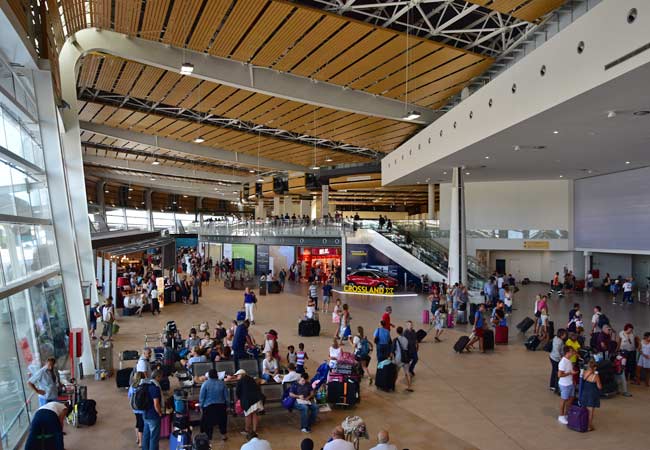
oh we were stuck in the airport!

Copenhagen was a bit expensive...

All we did was drink beer in Brussels...
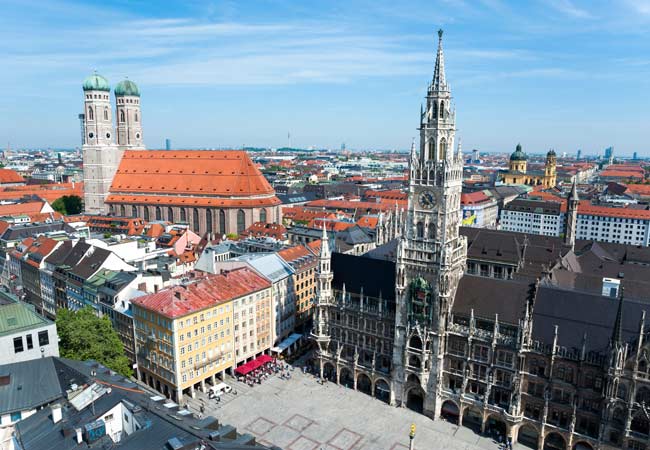
Muncih was crazy

And we got so burnt!
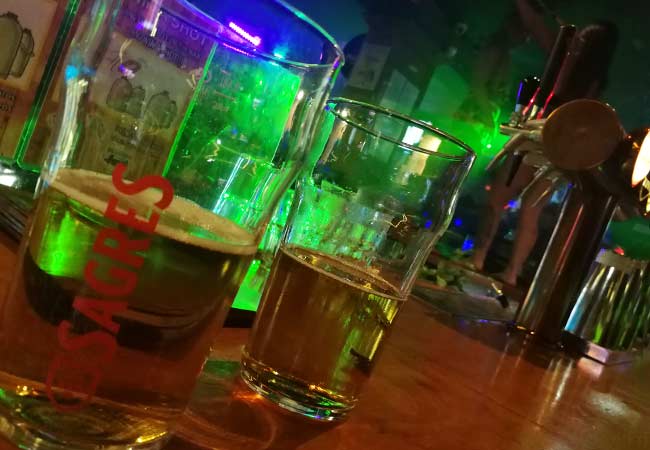
Remeber that night in Rome

oh we were stuck in the airport
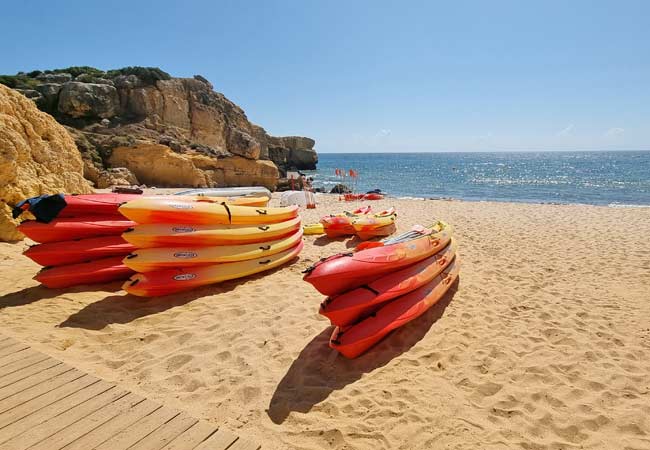
So much fun kayaking

Berlin and that group from Austria!

There was such a view from that church

And we got so burnt!

Munich was eventful, wasn't it!

Such a view from that cathedral in Florence
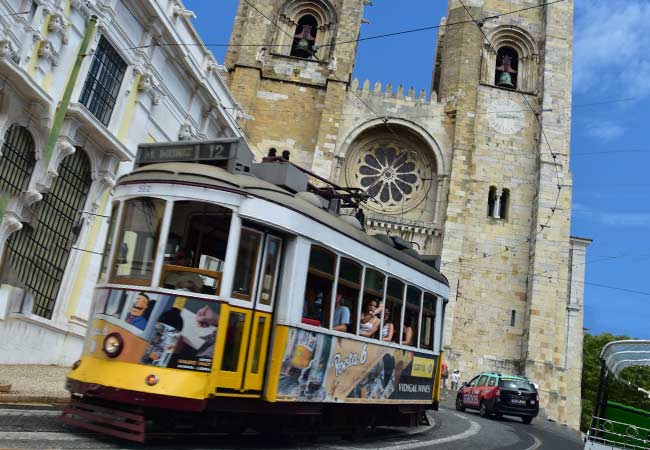
Lisbon was such so much fun

Last summer was so much fun .... x

Remeber that night in Rome

Lisbon was such so much fun

Such a view from that cathedral in Florence

Munich was eventful, wasn't it!

And we got so burnt!

Remeber that night in Rome

All we did was drink beer in Brussels...

Berlin and that group from Austria!

Can't wait to go back to Dubrovnik

Remember that boat ride in Prague

Copenhagen was a bit expensive...
